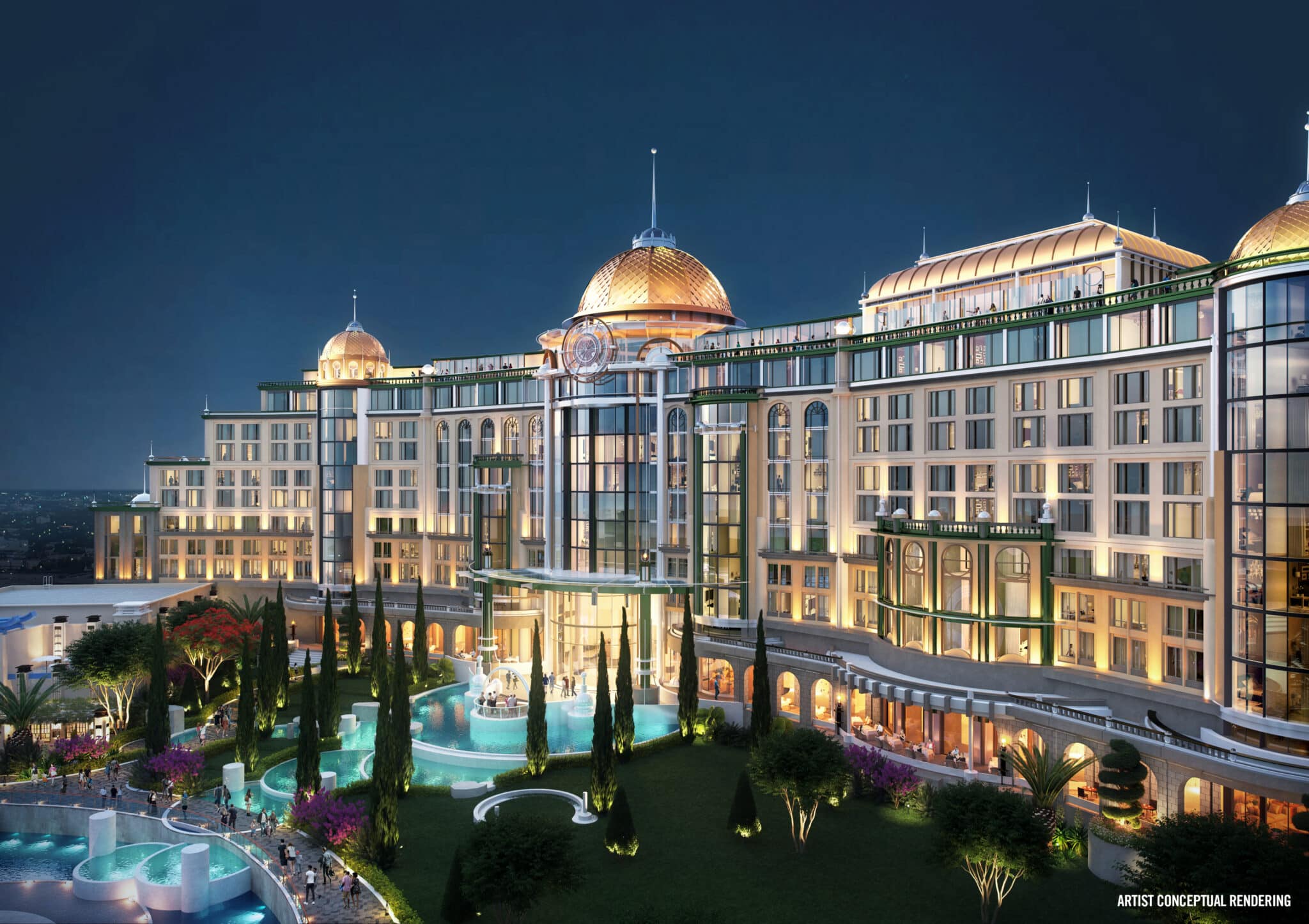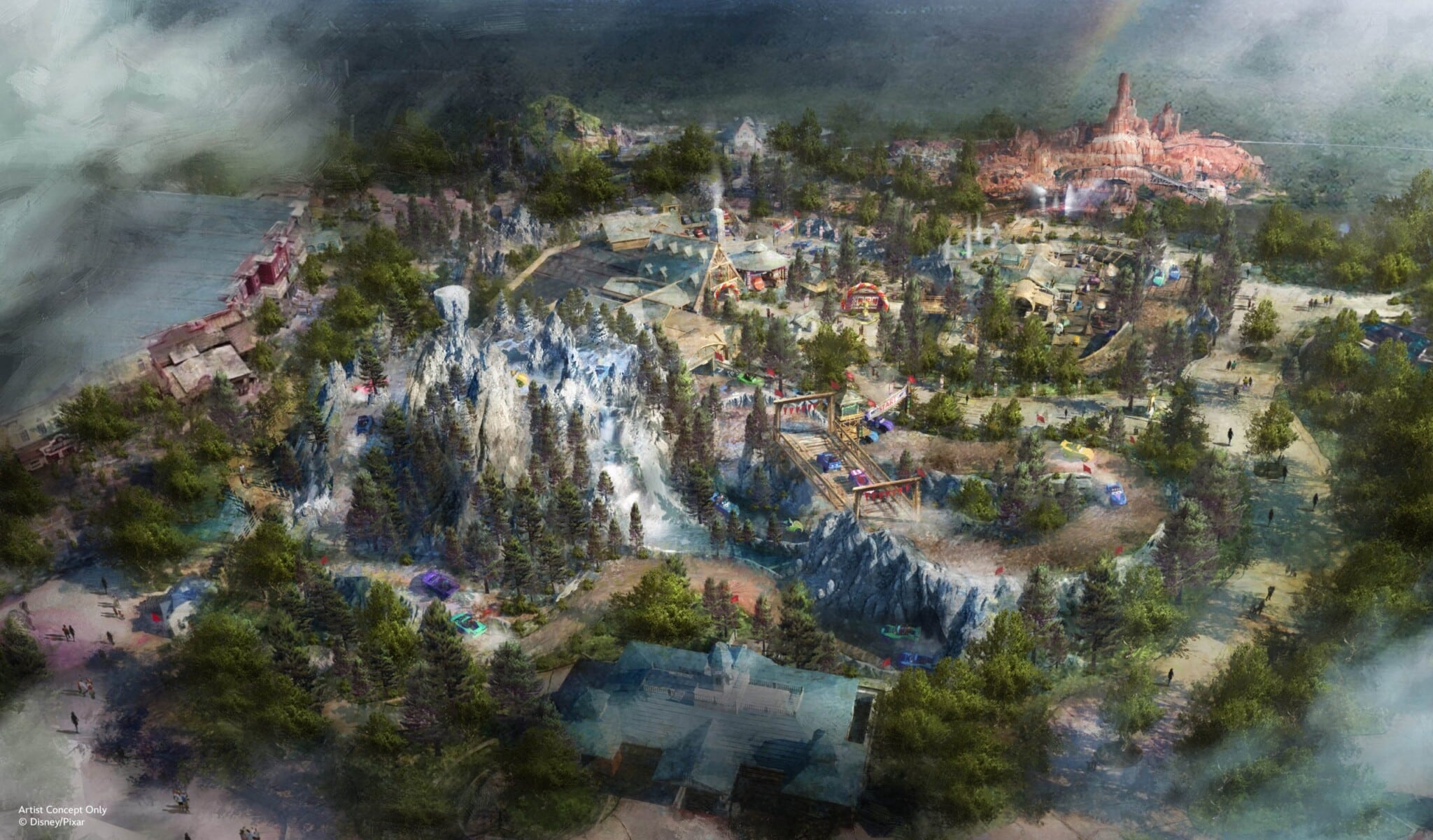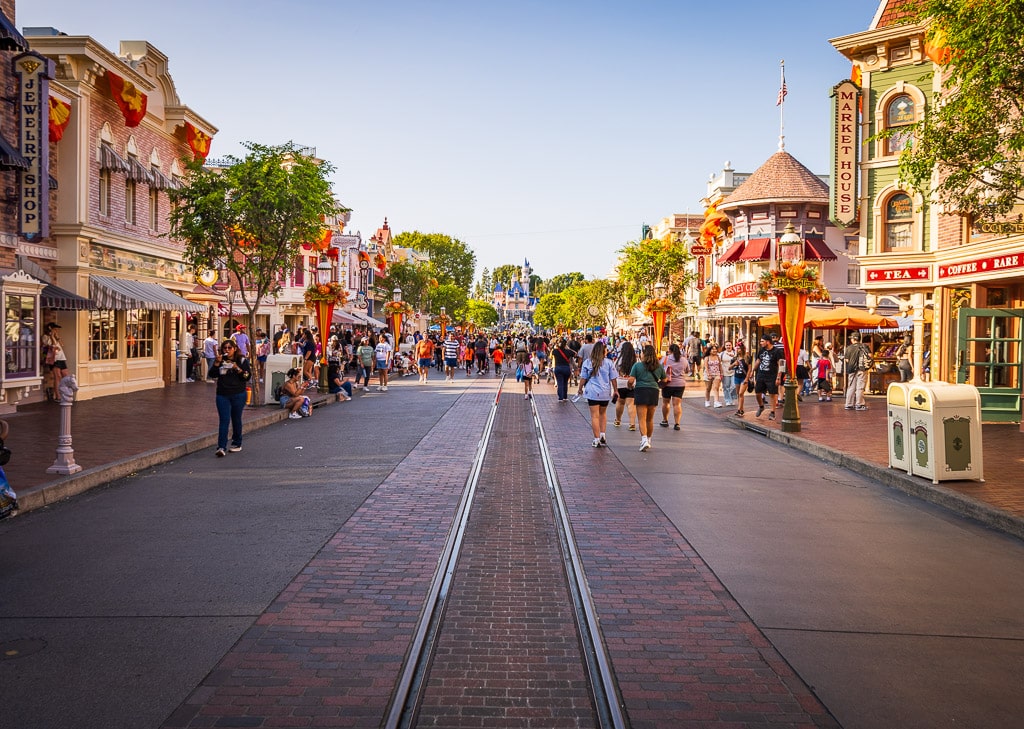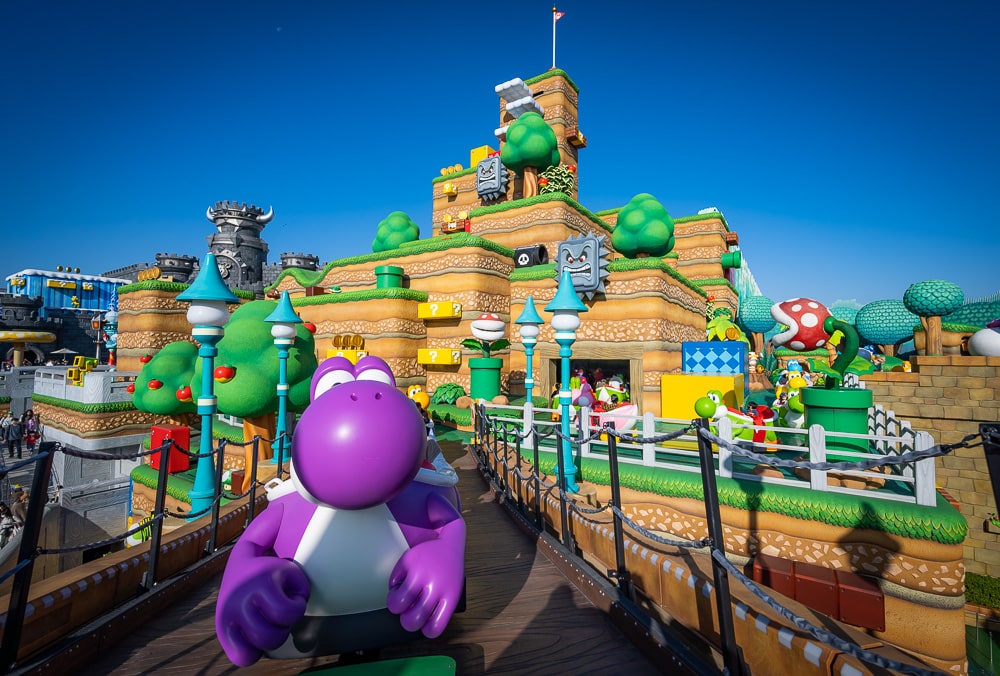
Super Nintendo World is Universal’s first theme park land dedicated to Mario and Luigi, with a Mario Kart ride, restaurant, snack spots, character meet & greets, interactive mini-games, and much more. This review features what we love and loathe about the area, with photos, info, recommendations, and thoughts on the good, bad, and ugly of this envelope-pushing new expansion.
For starters, everything here is based on the version of Super Nintendo World at Universal Studios Japan in Osaka, Japan. The original land is slightly larger, and differs from the Universal Studios Hollywood incarnation in a few ways. Most notably, there is no Yoshi’s Adventure ride in the California land. Also, all of the names are the English versions of the characters (e.g. Bowser as opposed to Koopa) and there are no face mask rules.
Suffice to say, Super Nintendo World is a dream come true for anyone who was raised on the SNES (am I dating myself too much?!), N64, Gamecube, Wii, Wii U (so like 4 of you), or Switch. It’s like stepping into Super Mario Bros or Mario Kart and exploring, doing battle with Bowser, and so much more.
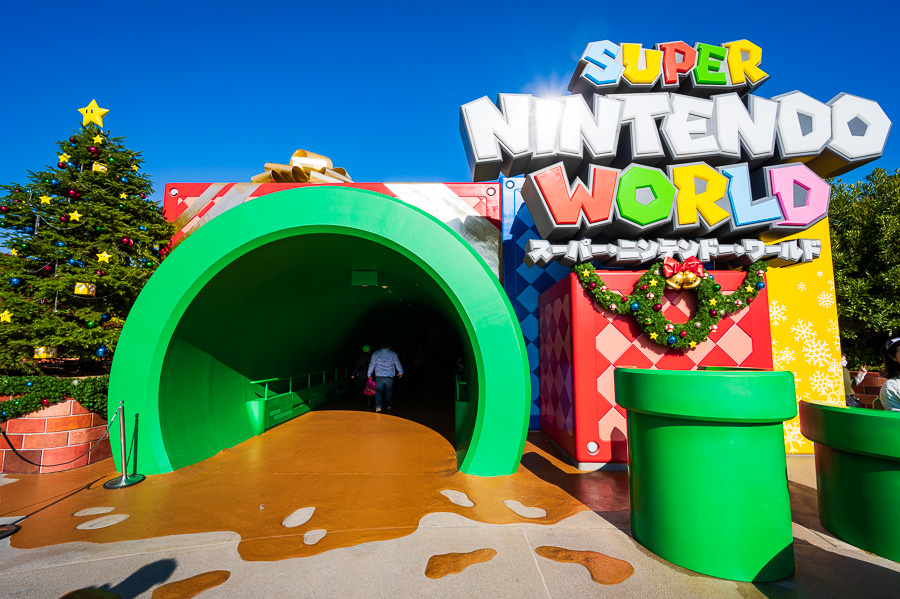
We might as well start right there, because what Super Nintendo World excels at most is wish fulfillment. Seeing the Mushroom Kingdom come into view for the first time after exiting the Warp Pipe was like stepping foot on Route 66 in Cars Land for the first time. The key difference being that I’m actually a Mario fan.
It’s impossible to articulate the overwhelming rush of nostalgia and excitement felt upon entering Super Nintendo World. It’s all so familiar and instantly recognizable, yet utterly unexpected. Running around the land as an adult feels shockingly similar to being in a basement back in 1998 playing Goldeneye on the Nintendo 64. (Mario Kart would’ve been the more fitting title, but my teenage crew’s game of choice was Goldeneye.)
Obviously very different in both style and substance, but that same sense of communal joy and fun. That’s a feeling I’ve been hard-pressed to recapture since, so it’s oddly fitting yet altogether unsurprising to find it once more in Super Nintendo World.
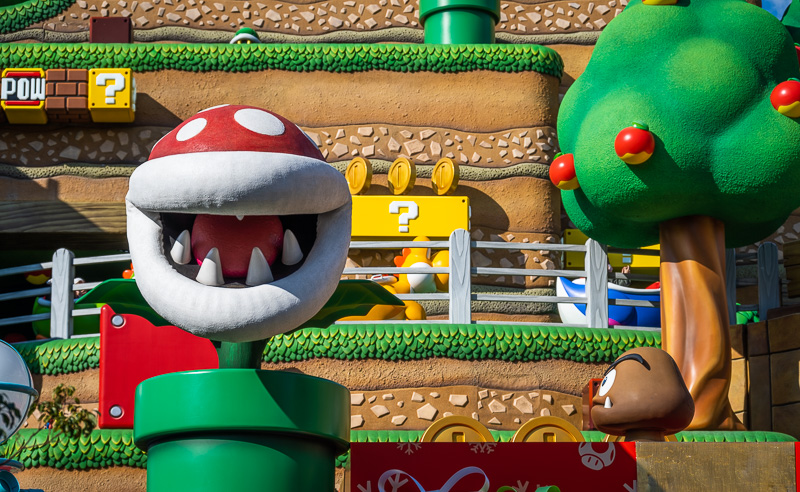
Sadly, Goldeneye is not one of the IPs represented in Super Nintendo World. Nor is Perfect Dark, the Legend of Zelda, Animal Crossing, Pokemon, Metroid, or–everyone’s favorite–Punch-Out! Although you may see the real-life version of that last one if tensions between guests get too high.
Despite the name, this is essentially Super Mario Land. Visitors enter Super Nintendo World via a Warp Pipe that leads from Super Star Plaza in the normal park to the inside of Peach’s Castle. With the exception of ‘Hidden Pikmin,’ this is Mario land through and through. Platforms float back and forth, coins spin high out of reach, Piranha Plants attack, Thwomps attempt to trap, and Goombas…do whatever it is that Goombas do.
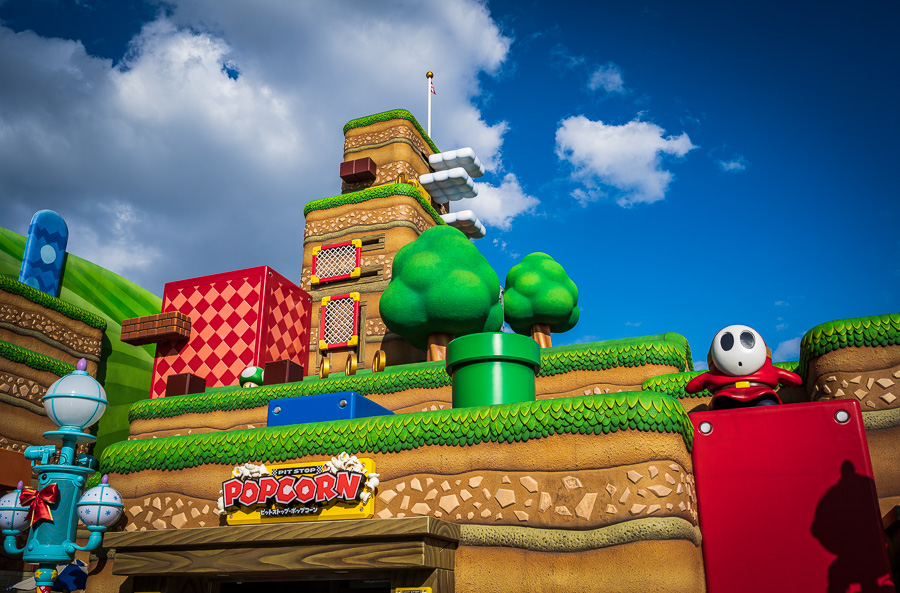
Without question, Super Nintendo World feels like being transported from Universal Studios into a 3D Mario land. And if it were an actual Nintendo game, the level design would be unparalleled from an aesthetic perspective. The area packs a powerful punch in a small footprint, using landscape to engage guests up and down (and down and up) multiple levels of the land.
The tight, 360-design is incredibly immersive, and there is literally something happening in every direction within Super Nintendo World. It truly feels like a highly-concentrated Mario 3D level, bursting at the seams with kinetic energy thanks to all of the motion, vibrant visuals, sound design, and more.
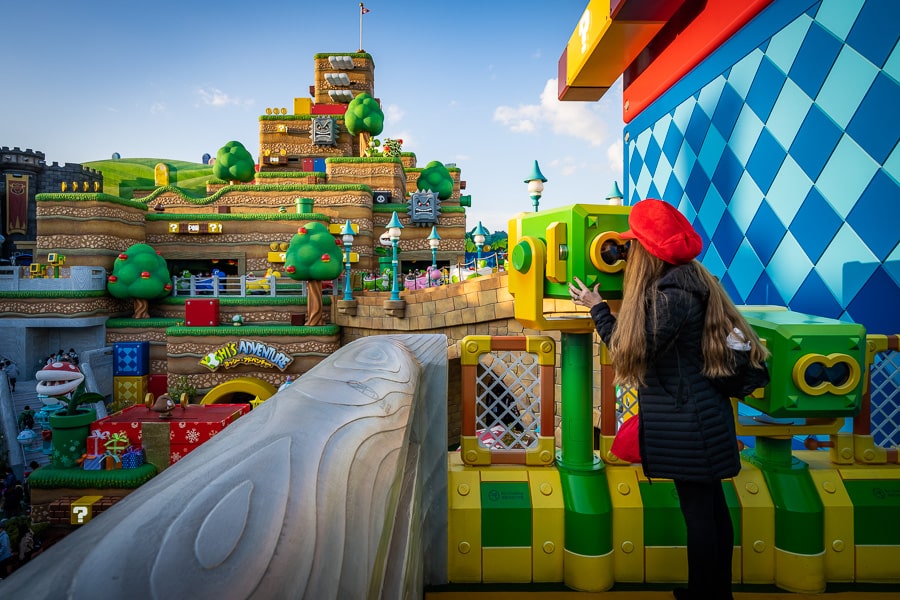
Prior to Super Nintendo World, the last big theme park addition was Star Wars: Galaxy’s Edge. While utilizing a lot of the same foundational ideas, the two couldn’t be any more different from one another. Galaxy’s Edge meanders and gives guests breathing room; Super Nintendo World is a non-stop assault on the senses.
Galaxy’s Edge is gamified largely via an integrated app; virtually everything in Super Nintendo World is tactile. Galaxy’s Edge has a lot of dead space; there’s almost nowhere to even sit in Super Nintendo World. Galaxy’s Edge is grimy and cold; Super Nintendo World is oozing with charm. Galaxy’s Edge is missing many of the most beloved Star Wars characters; Super Nintendo World is, too–there’s no Link, Zelda, or Ganon. (Not that I’m bitter about that or anything.)
Two different approaches, each with their own strengths and weaknesses. With that in mind, let’s turn to the individual elements of Super Nintendo World…
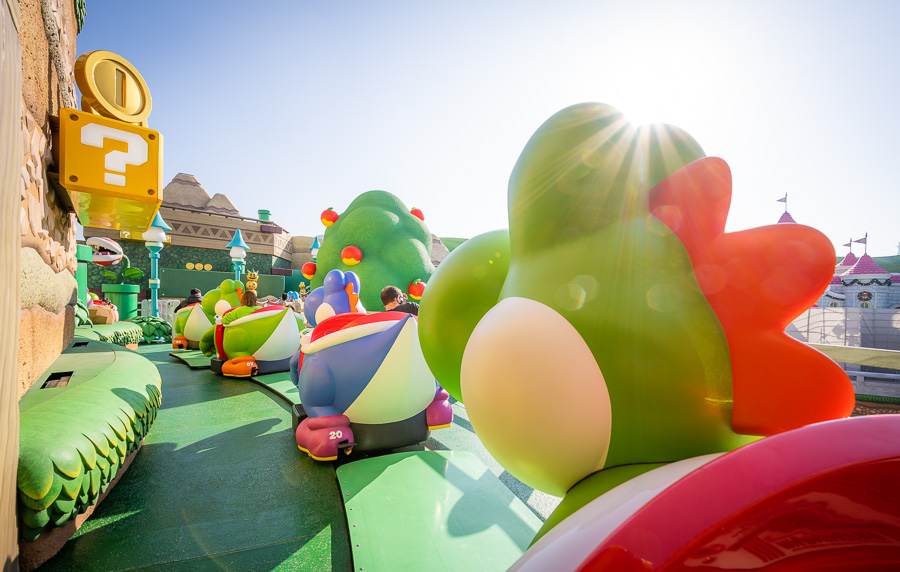
First, a couple of quick notes. Prior to visiting Super Nintendo World, we did our best to avoid spoilers. I’m vehemently anti-spoiler, always doing my best to experience a new land or attraction in person for the first time rather than via videos, photos, and text. With Super Nintendo World opening over a year before we could make our first visit, this was a tough task.
Outside of Mario Kart, there aren’t really many spoilers, per se. However, there are a few aspects of Super Nintendo World that are best discovered by surprise. As a courtesy so you can enjoy the experience to its fullest, we’re going to refrain from sharing photos and text about those elements. Their omission does not materially impact the review one way or the other.

Second, our visit was not part of a press preview. We paid out of pocket to visit Universal Studios Japan and also bought an Express Pass bundle that included Mario Kart and timed entry to Super Nintendo World (as well as Flying Dinosaur–always a must-do!).
We mention this not to throw shade on outlets that have done or will do media previews–there’s probably more bias with this land thanks to childhood nostalgia than anything else. Rather, we point it out because colossal crowds are a huge part of the Super Nintendo World experience, and that’s something that would not be apparent during previews. On that note, let’s start there…
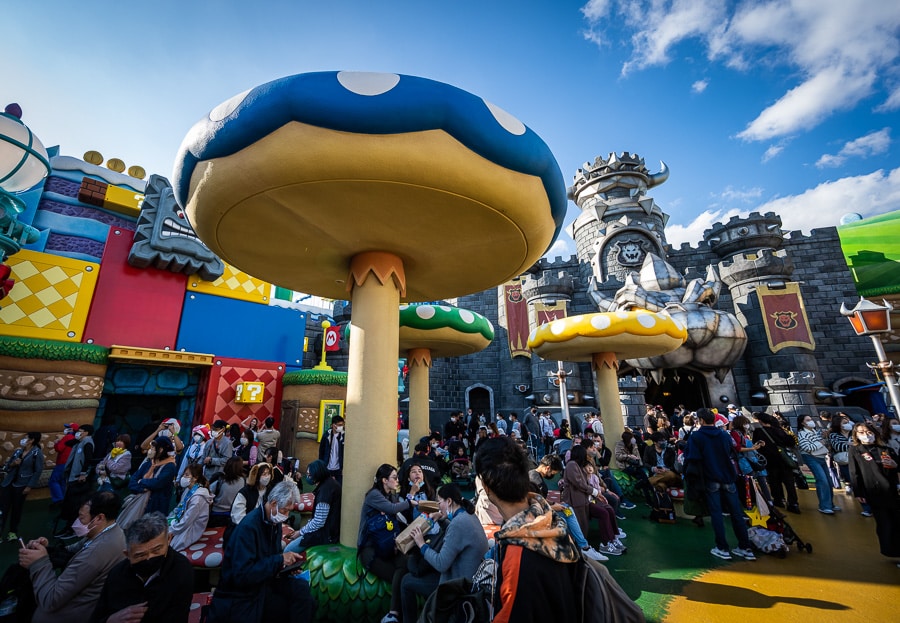
Crowds – When it’s busy, Universal Studios Japan is one of the worst theme parks in the world for crowds. Average wait times for many attractions hit triple-digits, and put even a busy day at Walt Disney World or Disneyland to shame. The park simply was not built for heavy attendance, and it doesn’t help that it’s easily accessible by train for about 5 million people.
Even with timed entry, Super Nintendo World compounds these crowd woes. The footprint is tiny and it is absolutely packed. Queues for the minigames overflow into walkways, transforming the land’s otherwise controlled chaos into regular ole chaos. There’s one comically small seating area and zero (0) other park benches in the entire land outside of that. (The de facto “seating area” is the ground by the Donkey Kong expansion.)

Both attractions had wait times exceeding an hour, with Mario Kart frequently in triple-digit territory. There were long lines for everything, including food and souvenirs. And these was on a moderately-crowded holiday season weekday–far from the worst we’ve ever experienced at USJ.
The limited real estate forced Universal to get creative with the footprint of Super Nintendo World, and it benefits to some extent from this. However, this goes well beyond charming and intimate–the land is way too small for comfort. Super Nintendo World should be at least double its current size with more minigame queues integrated inside the architecture.
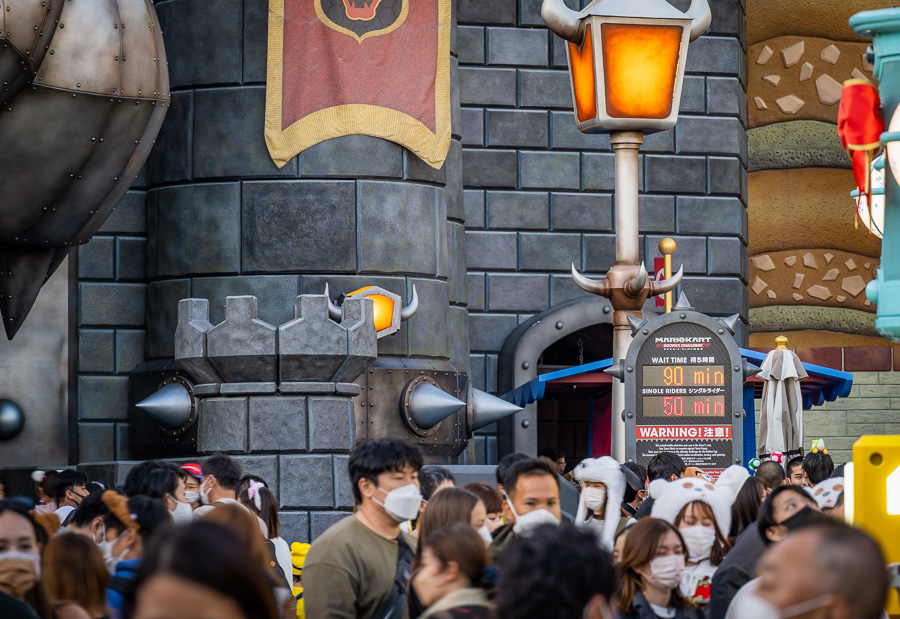
Instead of being double the size of the USJ incarnation, Super Nintendo World at Universal Studios Hollywood will be smaller. While some streamlining of design (less stairs and levels) and the elimination of Yoshi’s Adventure will negate this, it’s still likely way too small.
It’ll be interesting to see the design and size of the Epic Universe version, which will hopefully benefit from being a new build that isn’t shoehorned into existing and limited confines. I’m optimistic about that, although I still think Universal should be doubling-down on Nintendo in the upcoming Orlando park.
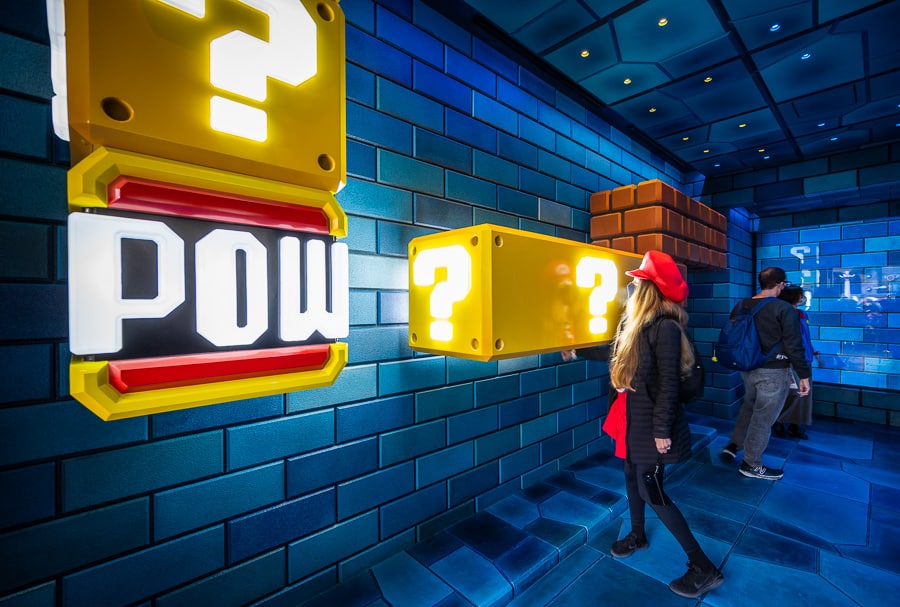
Interactivity – Although Mario Kart: Bowser’s Challenge is the headlining attraction that’ll be the big draw, the heart and soul of Super Nintendo World is its interactivity. Arguably, there are elements of ‘good’ and ‘ugly’ here. Let’s start with the latter, which is that much of the best parts of the land are behind the paywall of the Power-Up Bands. This cost us ~$20 (expect $25 to $30 in the U.S.) and is essentially a slap band with a big puck inside.
I’d be inclined to totally overlook this upcharge were it presented in a more thoughtful souvenir–something I’d actually wear or use outside of Super Nintendo World, or that could become an everyday accessory for the Universal parks, like the MagicBand. Even as it stands, this doesn’t bother me too much, as the Power-Up Band is a huge value-add in terms of what it unlocks.
Simply put, you must buy the Power-Up Band to get the full Super Nintendo World experience. If you only purchase one souvenir, make it the Power-Up Band. Buy at least one for your party–do NOT skip it to save money.
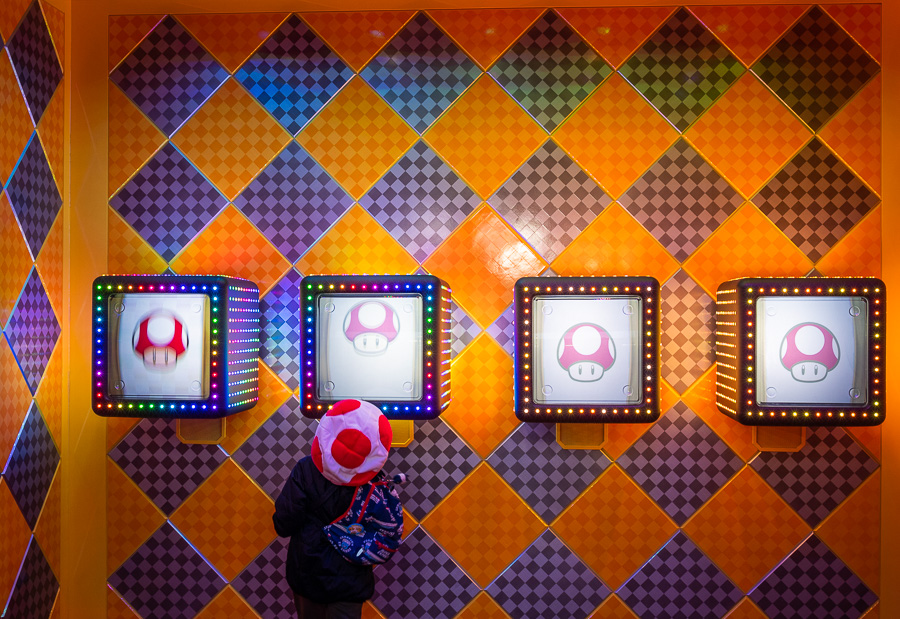
The paywall also doesn’t bother me because it seems like the Power-Up Band is the best way to interface with the land’s interactive elements, and track player stats and achievements. More than anything else, I am pleased that all of this is not screen-based. No offense to those who like the Play Disney Parks App, but doing as much as possible in the real world is the superior approach. I’ll happily pay ~$20 to not have my face glued to my phone. (In fact, I simply won’t do the latter–and it seems most guests in Galaxy’s Edge agree.)
Sure, this could be something more practical than a Power-Up Band. Perhaps a coffee mug–but that would be just a tad silly. And probably not dishwasher safe with that puck inside. On balance, the principle of this is mildly annoying, but the execution and enjoyment as compared to Disney’s alternates absolutely vindicates the decision.
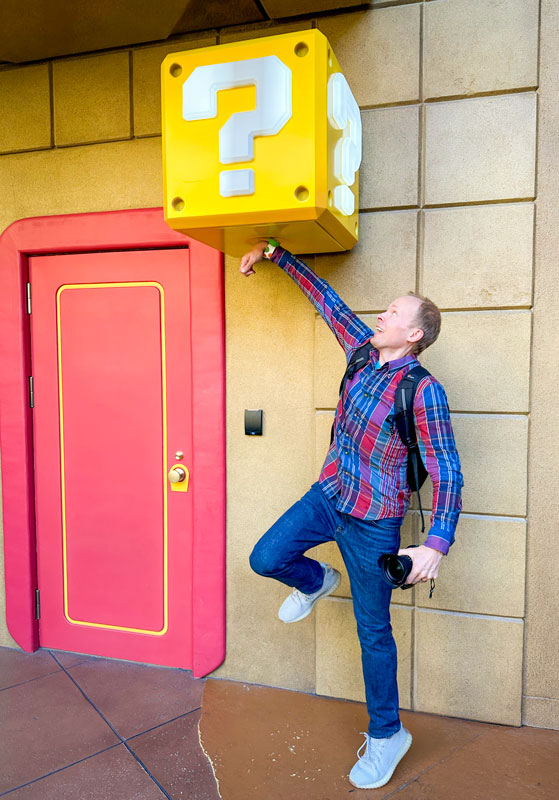
As for the execution of this interactivity, there are vibrant yellow Question Blocks dotted throughout the land, for one. It is impossible to describe just how satisfying it is to punch one of these and feel the coins being obtained along with the accompanying sound effect. This simple joy is one of my favorite aspects of Super Nintendo World–I’m not kidding. It offers that same dopamine hit as pulling back on the Millennium Falcon’s throttle lever to make the jump to hyperspace.
While anyone can get that particular rush, there are minigames that can only be played by those with Power-Up Bands. Some of these are simplistic but fun, group challenges to compete with friends and strangers. Others are surprisingly challenging, and offer a sense of immense satisfaction upon completion. Others still are addictive, and you’ll want to play them over and over to improve your results or achieve perfection. In other words, typical Mario stuff.
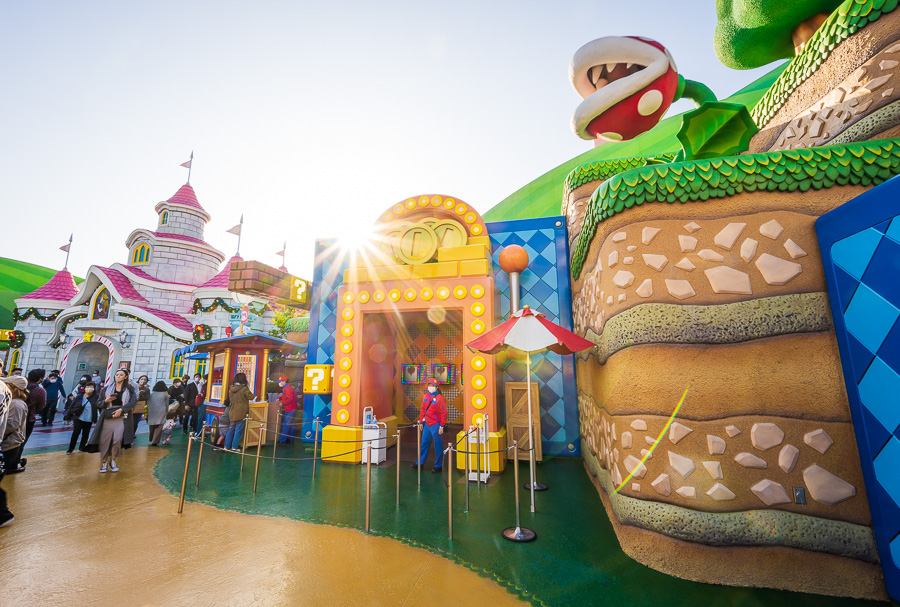
The way these minigames are thoughtfully integrated into Super Nintendo World is also deserving of praise. Some are located out in the open, occupying prime real estate overlooking Mushroom Kingdom. This is the case with Piranha Plant Nap Mishap, in particular, where views of the land enhance the players’ experience–and views of the players darting around enhances the land for others. My favorite minigames are all hidden from view, with Bob-omb Kaboom being a challenging highlight.
While losing is possible, the games are intuitive enough and there’s a degree of handholding and teamwork that allows these games to “work” across different ages and skill levels. So long as you put forth a good faith effort, you should be able to obtain enough keys for the climactic boss battle. Our crew of Sarah and me plus our homie Guy Selga from TouringPlans and random Japanese guests who rounded out our group from time to time, managed to do pretty well despite varying skill levels and language barriers.
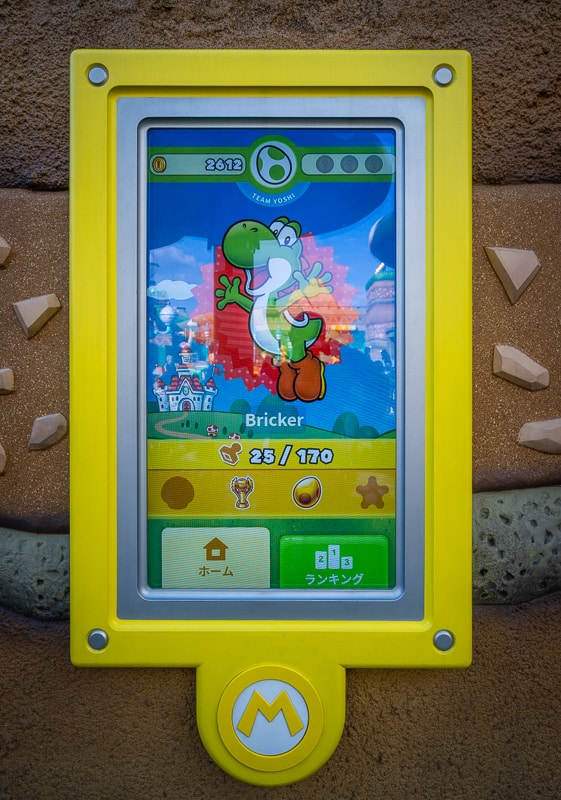
All in all, it’s the interactivity and ways Super Nintendo World engages guests that sets it apart. This is the best gamified theme park land we’ve ever experienced, and it’s not even a close call.
There’s also a bit of irony in a screen-based medium like the Mario games eschewing that style of interactivity in favor of tactile, real world experiences. That was absolutely the right decision to make. After all, how can Mario’s land compete with his fully-fleshed out video games if reduced to a similar format? Still, it’s a lesson that other theme park designers–looking at you, Imagineering–should take to heart.
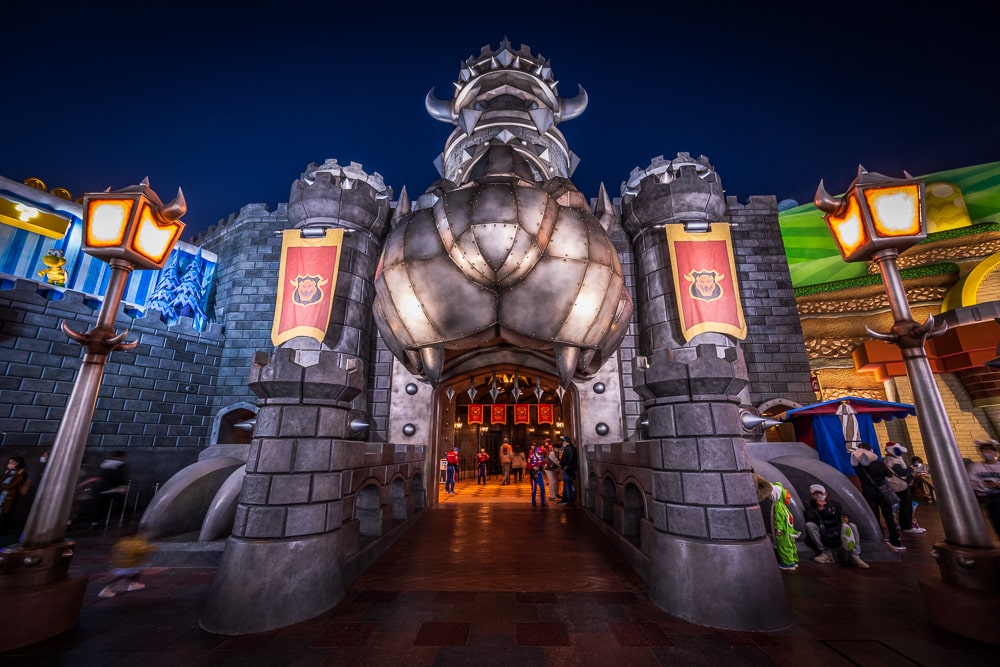
Mario Kart: Bowser’s Challenge – The headlining attraction of Super Nintendo World is Mario Kart: Bowser’s Challenge. This all-new, technologically-advanced ride melds augmented reality with projection mapping technology and physical sets in a dark ride. Featuring a multi-sensory explosion of color, sound and movement, guests are seated in stadium-style, four-seat vehicles while navigating a ‘greatest hits’ of iconic Mario Kart courses while wearing AR goggles.
The premise of Mario Kart: Bowser’s Challenge is simple but challenging, appealing to guests of all ages regardless of gaming experience. As part of Team Mario, guests steer through a sampling of courses while collecting coins and shells, and shooting the latter at enemies in order to defeat Team Bowser. The ride-through game is both a shooter and a racer, skewing towards the former. (It also has a steeper learning curve than normal for this type of attraction, owing largely to the AR.)
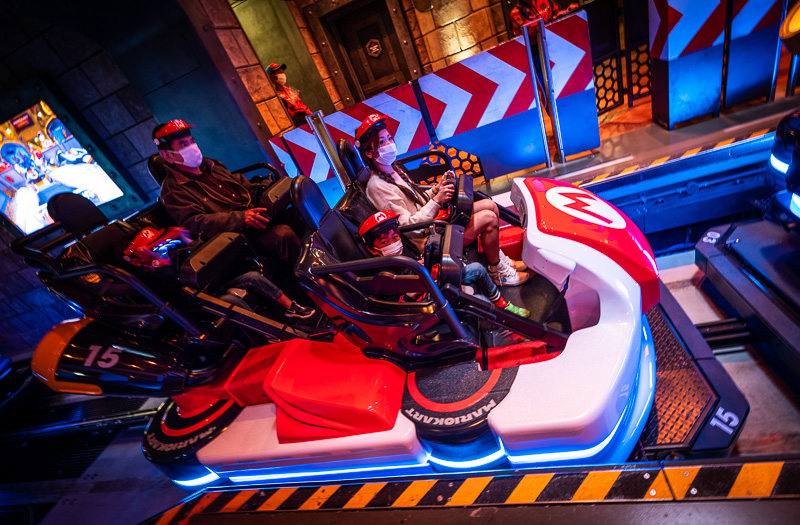
Already, Mario Kart has proven polarizing with fans. Many expected something different–something faster, or simply do not like how the AR works. While there are legitimate criticisms of the ride and reasons for some being underwhelmed, I absolutely love it. We’ve already done it numerous times, and I cannot wait to do it again at Universal Studios Hollywood.
Mario Kart: Bowser’s Challenge is one of the most envelope-pushing and ambitious attractions I’ve ever experienced in any theme park. Like the best Mario Kart courses, it’s the perfect mixture of frustrating, fun, and addictive. You want to keep coming back, seeing what you missed before, and improving your results. I have many, many more thoughts about this attraction, and you can read them–and see more–in our spoiler-free Mario Kart: Bowser’s Challenge Ride Review.
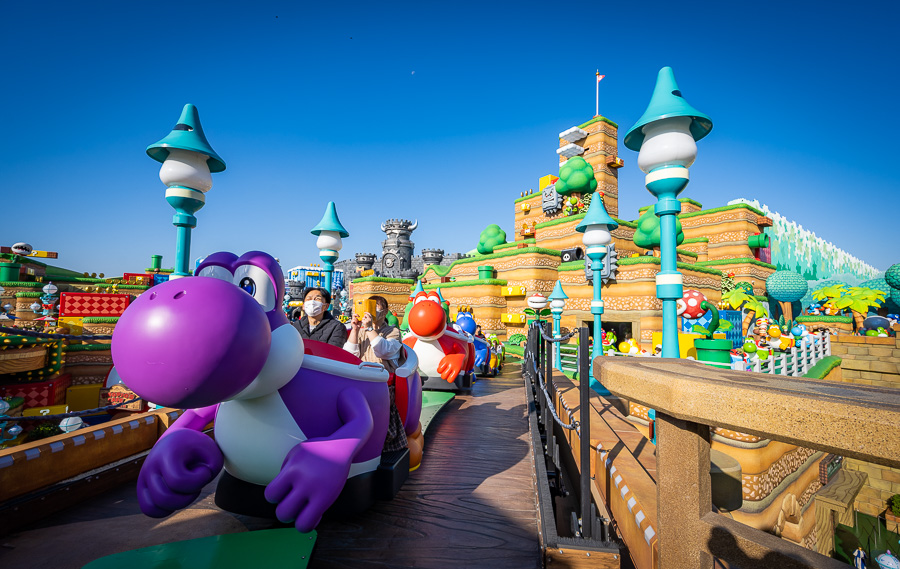
Yoshi’s Adventure – The supporting player attraction in Super Nintendo World is Yoshi’s Adventure, which is a scenic ride for all ages. In Yoshi’s Adventure, two guests board one of the non-stop parade of multi-colored Yoshis crawling their way through a meandering path above Super Nintendo World.
It’s outdoor section offers a sweeping view of the Mushroom Kingdom from Mount Beanpole and surrounded by Piranha Plants and other obstacles. Inside, there are a variety of cute characters and an assortment of visuals. This, too, has an interactive element as you search for Captain Toad on a treasure hunt to find 3 mysterious eggs. You tap the corresponding colored button on a panel inside the carriage when you find one; pretty simple stuff.
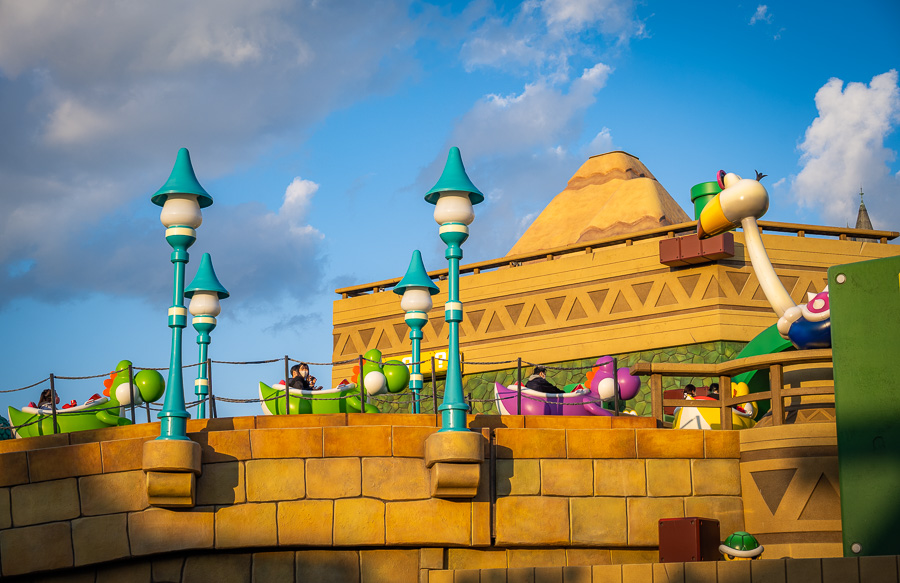
Based on that description alone, Yoshi’s Adventure might sound like a relaxing attraction and a good way to decompress after the frenzied fun of Mario Kart: Bowser’s Challenge. As noted above, we had avoided spoilers before visiting, but were generally aware that Yoshi’s Adventure had not been well-received among fans.
After the first 30 seconds or so, I was starting to question this, wondering if video viewers were also not giving this ride a fair shake. I was feeling pretty satisfied, thinking this might be the Super Nintendo World PeopleMover: a low-stakes ride that didn’t get in its own way and afforded great views and a nice way to unwind. Just as that thought crossed my mind, we went inside an underwhelming tunnel. Another 30 seconds later, it was over. That was it?!
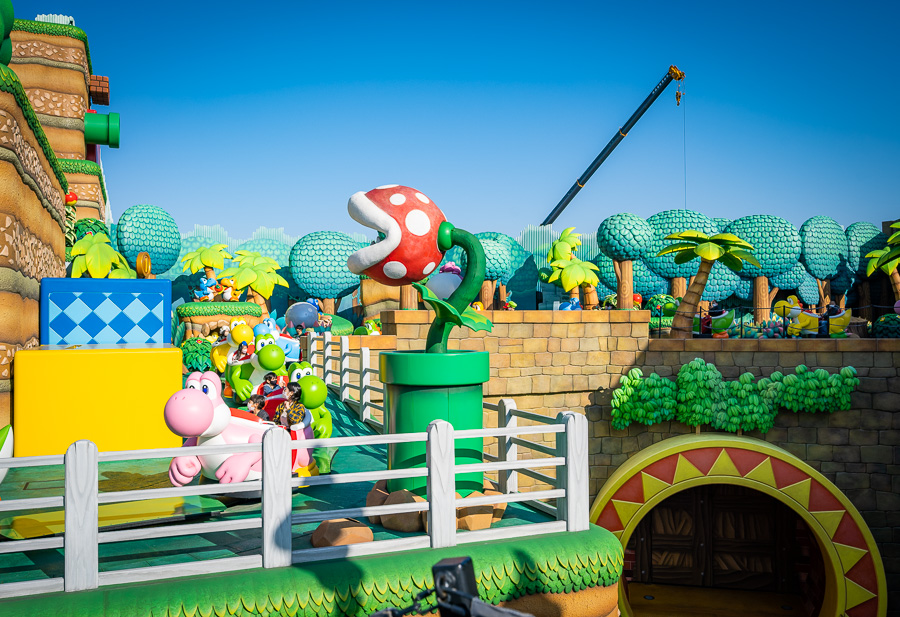
Yoshi’s Adventure certainly doesn’t qualify as ‘ugly,’ but it definitely is ‘bad.’ Beyond the ride being way too short, the dark ride tunnel is underwhelming and struck me as cheap–and not in a charming, storybook style way. Just cheap. I felt the same way about the queue, and the whole experience reminded me of Cat in the Hat at Islands of Adventure–except with an hour-long wait time.
Given the space constraints at Universal Studios Hollywood, leaving out Yoshi’s Adventure was definitely the right decision. Its wait time was simply too high for a ride with no payoff, and its duration is too short for a leisurely, low-stakes tour of Super Nintendo World from high above. With that said, I do hope that Yoshi’s Adventure is reworked (and lengthened) for Epic Universe. The simple premise and opening ~30 seconds are absolutely fantastic, and if that could be stretched to something the duration of the PeopleMover, this would be a fantastic and fulfilling attraction.

Food – There are a variety of snack stands in Super Nintendo World, each of which serve up fun foods. The main draw is Toadstool Cafe. Step inside Toad House to indulge in inventive dishes crafted by Chef Toad and enjoy scenery of the Mushroom Kingdom from the windows, which are actually video screens. This restaurant is cute, and there’s a lot going on–but it’s also a giant mess hall inside a single, cavernous room.
As for the food, what’s served at Universal Studios Japan is fantastic. It’s also very much in keeping with the kawaii cafes that are found everywhere in Japan from Harajuku to train stations to theme parks. This type of cute cuisine is commonplace there, so I wouldn’t necessarily draw any conclusions about the same dishes being available in Hollywood or Florida.
They should be, though. With few exceptions, Universal’s in park restaurants do poorly with food. There’s very little that’s ambitious or delicious that’s not a comfort food. A lot of it is just downright bad. If the same food is served in Toadstool Cafe at USH, it’s instantly the #2 (maybe #1) restaurant in the park.

Ultimately, there’s a lot to love about Super Nintendo World and it exceeded my expectations as a whole. Granted, I knew going in that the land was going to be small (we watched it being built for years from Flying Dinosaur!) and also had my expectations tempered about both rides.
While Super Nintendo World is not perfect, the only real ‘foundational flaw’ from my perspective is Yoshi’s Adventure. There is no fixing that, at least at Universal Studios Japan. Everything else can and will evolve over time, becoming better as technology catches up to ambitions and Universal learns what does and doesn’t work. Physical expansion will also greatly benefit the area, preventing the crowds from overwhelming.

Despite its small size, Super Nintendo World packs a powerful punch and delivers an immense amount of satisfaction and fun. It also left me wanting more. Normally, this is a good feeling–and that’s mostly the case with Super Nintendo World, too. It’s better to crave more after a lengthy experience than to leave early, underwhelmed and disappointed. Here, I also felt like there should be a lot more.
Nintendo’s franchises lend themselves so well to theme parks, and it feels almost criminal that we aren’t getting Zelda, Pokemon, Luigi’s Mansion, and a number of other characters, settings, and scenarios. The Donkey Kong expansion should make a big difference, but it should just be a start. Universal Creative has proven the theme park adaptations of these characters are in capable hands, and I’m really looking forward to see them evolve the ideas and interactive technology over time.
If you’re preparing for a Southern California vacation, check out our other planning posts, including our exhaustive Guide to Universal Studios Hollywood. Need advice for LA? Read our Ultimate Los Angeles, California Planning Guide. Visiting other SoCal theme parks? Consult our comprehensive Disneyland Vacation Planning Guide and Knott’s Berry Farm Planning Guide.
YOUR THOUGHTS
What do you think of Super Nintendo World? Excited to experience Mario Kart in real life? Thoughts on Power Bands, Timed Entry, or anything else covered here? Disappointed that Yoshi’s Adventure and Donkey Kong Mine Cart Madness won’t be built in the California version of Super Nintendo World? Eager to step foot into this video game universe? Do you agree or disagree with our commentary? Any questions? Hearing your feedback–even when you disagree with us–is both interesting to us and helpful to other readers, so please share your thoughts below in the comments!



